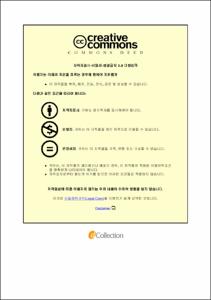원두(Roasted Coffee) 배전도 및 추출온도가 커피 중 아크릴아마이드 생성에 미치는 영향과 안전성 평가
- Alternative Title
- Effect of Coffee Bean Roasting Degree and Extraction Temperature on Acrylamide Production in Coffee and its Safety Evaluation.
- Abstract
- This study was aimed to investigate level of the coffee intake for the daily and preference in adults and to analyze the amount of acrylamide produced during coffee roasting. Also, it was evaluated human exposure and safety level of acrylamide for the coffee intake for providing information efficiently. As the result of investing coffee intake by sex and age, males had the highest proportion in 3 to 4 cups and females drank 1 to 2 cups the most. It had the highest ratio of 1 to 2 cups consumption in thirties, fifties, and sixties, but 3 to 4 cups in twenties and forties. Awareness of acrylamide was low overall. But there was the highest ration of intention to drink 1 to 2 cups per day in case of recognizing acrylamide. Green bean and roasted coffee bean had similar moisture and ash contents. However, there was a significant difference in
crude fat. Compared to color difference, dark roasting coffee bean had a lower L (lightness) and b (yellowness) value than green bean one. The acrylamide content of the hot brew coffee was 0.053 mg/kg in the light roast, 0.045 mg/kg in the medium roast, and 0.036 mg/kg in the dark roast. Otherwise in case of cold brew, contents of acrylamide was 0.063 mg/kg in the light roast, It was 0.040 mg/kg in medium roast and 0.043 mg/kg in dark roast. Human exposure of acrylamide per cups were 0.12 μg/kg b.w./day for men and 0.15 μg/kg b.w./day for women by calculating based on average by age and sex.
- Issued Date
- 2021
- Awarded Date
- 2021. 8
- Type
- Dissertation
- Keyword
- 아크릴아마이드 Acrylamide 커피 Roasted coffee
- Publisher
- 부경대학교
- Affiliation
- 부경대학교 글로벌수산대학원
- Department
- 글로벌수산대학원 식품산업공학과
- Advisor
- 양지영
- Table Of Contents
- Ⅰ. 서론 1
Ⅱ. 설문조사 및 분석 5
1. 설문연구 내용 및 방법 5
1.1. 조사대상 및 기간 5
1.2. 분석방안 및 설문지 구성 5
2.시료준비 5
2.1. 시료 선정 7
2.2. 시료 전처리 7
2.2.1. 로스터 방식 7
2.2.2. 배전도 선정 및 확인 7
2.2.3. 시료 분쇄 9
2.2.4. 시료 추출방법 9
3. 일반성분 함량 및 색차 분석 9
3.1. 일반성분 함량 분석 9
3.2. 색차 실험 11
4. 아크릴아마이드 분석 11
4.1. 시약 및 기구 11
4.2. 아크릴아마이드 분석을 위한 시료 전처리 12
4.2.1. 볶은 커피 12
4.2.2. 추출 커피 13
4.3. 기기분석조건 13
5. 통계처리 13
5.1. 설문 연구 통계처리 13
5.2. 통계처리 및 검증 16
Ⅲ 결과 및 고찰 17
1. 성별에 따른 커피선호도 조사결과 17
1.1. 커피음용 유무 및 음용 이유에 대한 설문조사 17
1.2. 1일 커피섭취량 및 선호 배전도에 대한 설문조사 19
1.3. 아크릴아마이드 인지도 및 추출커피에서 아크릴아마이드 검출 시 섭취 유무에 대한 설문조사 19
1.4. 식품 안전성 관심도와 교육 방안에 대한 설문조사 23
2. 연령에 따른 커피선호도 조사결과 23
2.1. 커피음용 유무 및 음용 이유에 대한 설문조사 23
2.2. 1일 커피섭취량 및 선호 배전도에 대한 설문조사 27
2.3. 아크릴아마이드 인지도 및 추출커피에서 아크릴아마이드 검출 시 섭취 유무에 대한 설문조사 27
2.4. 식품 안전성 관심도와 교육 방안에 대한 설문조사 31
3. 생두 및 원두의 일반성분 함량 분석 결과 33
4. 생두 및 원두의 아크릴아마이드 분석 결과 36
4.1. 아크릴아마이드 분석결과에 대한 신뢰성 36
4.1.1 검량곡선의 직선성 38
4.1.2. 정확성 38
4.1.3. 검출한계 및 정량한계 38
5. 커피 섭취량에 따른 안전성 평가 40
Ⅳ 요약 43
Ⅴ 참고문헌 45
Ⅵ 부록 : 설문지 49
Ⅶ 감사의 글 51
- Degree
- Master
- Files in This Item:
-
-
Download
 원두(Roasted Coffee) 배전도 및 추출온도가 커피 중 아크릴아마이드 생성에 미치는 영향과 안전성 평가.pdf
기타 데이터 / 2.23 MB / Adobe PDF
원두(Roasted Coffee) 배전도 및 추출온도가 커피 중 아크릴아마이드 생성에 미치는 영향과 안전성 평가.pdf
기타 데이터 / 2.23 MB / Adobe PDF
-
Items in Repository are protected by copyright, with all rights reserved, unless otherwise indicated.